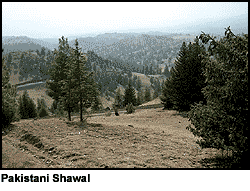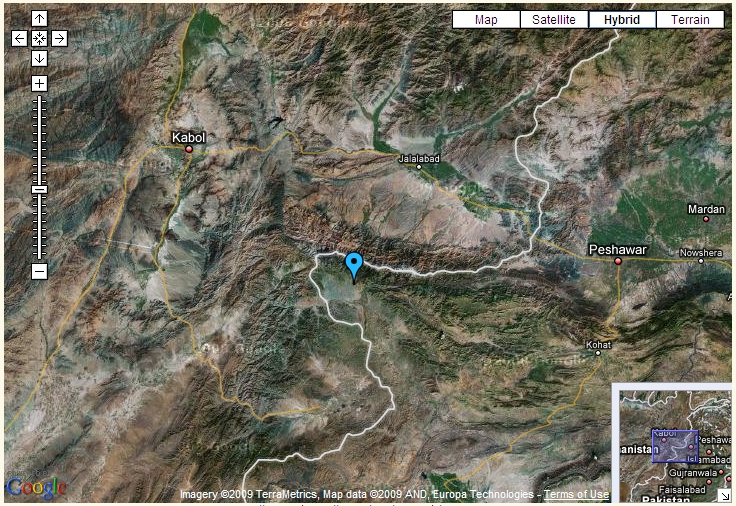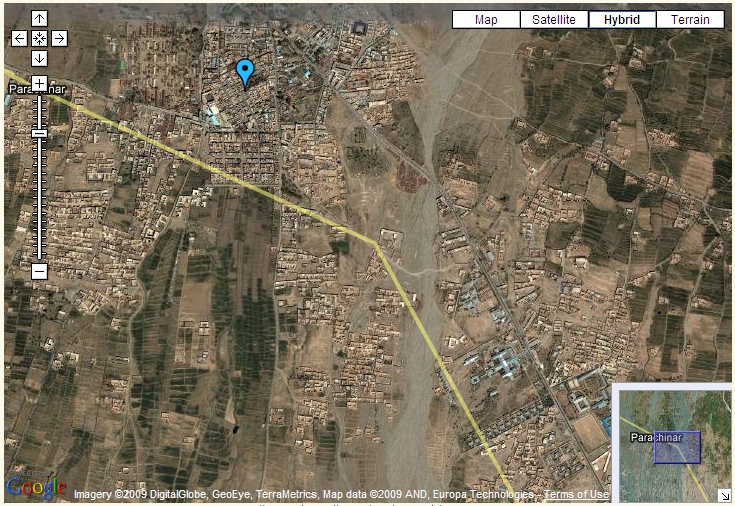Joshua Foust is both a genuinely good guy and an expert on the affairs of Central Asia. I am neither. With that said, I strongly disagree with the theme of his analysis of the question of whether all militants are the same? He weighs in thusly.
Max Boot thinks all militants are the same.
Of greater immediate concern are al Qaeda’s allies: the Quetta Shura Taliban, the Haqqani network and Hezb-e-Islami Gulbuddin (HiG), which among them deploy thousands of hardened terrorists. These groups, in turn, are part of a larger conglomeration of extremists based in Pakistan including the Tehrik-i-Taliban Pakistan (the Pakistani Taliban), Lashkar-e-Taiba and Jaish-e-Mohammed…
The major difference among them, at least so far, has been one of geographic focus. The Taliban, the Haqqani network and HiG want to seize power in Afghanistan. The Pakistani Taliban aspires to rule in Islamabad. Lashkar-e-Taiba and Jaish-e-Mohammed are primarily focused on wresting Kashmir away from India, although there have been reports of the former’s network expanding into Bangladesh, Nepal and Sri Lanka. Only al Qaeda has a global focus—so far.
Apart from rightly noting that al Qaeda is the only one of these groups that poses even a remote threat to the U.S. homeland, this is basically all wrong—so wrong I’m curious if it is the result of maliciousness or just laziness. Boot engages in some worrying conflations and conceptual fuzziness. Assuming the Pakistani and Afghan Taliban groups work together, are equally associated with al Qaeda, or pose an equal and in some way interchangeable threat is, put simply, dramatically at odds with our understanding of those groups, their goals, and their methods. There is no ” a larger conglomeration of extremists,” as he asserts, as that term implies an interoperability that just doesn’t exist in the real world.
Mullah Omar, contrary to what Boot writes, was not closer to Osama bin Laden than Hafiz Muhammed Saeed — and that sort of formulation misses the point anyway. Similarly, and again in contrast to Boot’s portrayal, there ARE a number of signs that the Afghan Taliban (NOT the Pakistani Taliban or Kashmir-focused terror groups, all of which Boot confuses) is seeking a way to break with al Qaeda — and we have reports of these signs going back at least to 2008.
We’ll start with this bit. I am of the opinion – based on what I have studied – that most of the so-called Afghan “Taliban” who have sought to “reconcile” with the Karzai government are washed-up has-beens who want an easier life as they go into their golden years. They play us and the Afghan government for fools, and they don’t legitimately represent either the Quetta Shura or Tehrik-i-Taliban (or any allied or affiliated or similar group).
Moving on, it might have been legitimate to have discussed divisions, subdivisions and categories of Taliban and al Qaeda ten or even six years ago. Things have changed since then.
… they have evolved into a much more radical organization than the original Taliban bent on global engagement, what Nicholas Schmidle calls the Next-Gen Taliban. The TTP shout to passersby in Khyber “We are Taliban! We are mujahedin! “We are al-Qaida!” There is no distinction. A Pakistan interior ministry official has even said that the TTP and al Qaeda are one and the same.
Nick Schmidle – who is also a genuinely good guy and a scholar – gave us a learned warning shot over the bow. It was reiterated by David Rohde who was in captivity by the Taliban.
Living side by side with the Haqqanis’ followers, I learned that the goal of the hard-line Taliban was far more ambitious. Contact with foreign militants in the tribal areas appeared to have deeply affected many young Taliban fighters. They wanted to create a fundamentalist Islamic emirate with Al Qaeda that spanned the Muslim world.
More recently we have a report at the Asia Times from Syed Saleem Shahzad on Maulvi Nazir.
Extremely loyal to Taliban leader Mullah Omar and a part of the Afghan Taliban, Nazir began as a conventional Talib guerrilla and a follower of the populist traits of the Taliban movement.
This changed in 2006, when, like many others including Sirajuddin Haqqani, Nazir became inspired by al-Qaeda and realized that fighting a war without modern guerrilla techniques meant draining vital human resources for no return.
That led to the advancement of the skills of Nazir’s fighters, and it also came with rewards.
In Afghanistan, if a commander sticks solely to his relations with the Taliban, he will never climb the ladder to prominence and the Taliban can only provide a limited number of local tribal fighters and meager funds. But if a commander allies with al-Qaeda, he is given the opportunity for joint operations with top Arab commanders who arrange finances for those operations.
Similarly, breakaway factions of Pakistani jihadi organizations like the Jaish-e-Mohammad, the Laskhar-e-Taiba and the Harkatul Mujahideen also supply an unending stream of fighters to those commanders associated with al-Qaeda.
Nazir’s affiliation with al-Qaeda seems to have passed unnoticed by the United States and NATO, which are investing heavily in a reconciliation process with the “good Taliban” and they appear not to understand the drastic changes that have taken place among the top cadre of the Taliban …
“What is the rationale of dialogue after NATO’s withdrawal?” Nazir asked rhetorically. “Then, the Taliban and NATO can hold a dialogue on whether the Taliban would attack their interests all over the world or not, and what treaties should be undertaken in that regard.”
Taken aback by this statement from a Taliban stalwart who is not perceived as being a global jihadi but simply a guerrilla fighting against occupation forces in Afghanistan, I intervened. “Hitting Western targets abroad might be al-Qaeda’s agenda, but it is not the Taliban’s, so why should the West negotiate that with the Taliban?”
“Al-Qaeda and the Taliban are one and the same. At an operational level we might have different strategies, but at the policy level we are one and the same,” Nazir said, surprising me further.
I’m usually hesitant to cite Syed Saleem Shahzad since he is a mouth piece (witting or unwittingly) for the Taliban. But occasionally he scores significant interviews, and those tend to be very productive and informative. For this particular interview, the only thing that surprises me is that Syed Saleem Shahzad is surprised.
To be sure, there are factions within the TTP, and in fact, the Taliban are an amalgam of groups, subgroups, factions, leaders, and so on and so forth, some of whom disagree and even level threats at each other.
So what? We all knew that. The question redounds to threat, or some approximation thereof. And so here is the crux of the issue. Back to Foust as he opines “If these groups do not pose a threat to the United States, then it is not our problem to “fix” them. Period.” And he summarizes.
I had hoped that the death of Osama bin Laden would at least temporarily tamp down on the irresponsible fear-mongering over a few crazies with guns in mountains whose names we cannot pronounce and who cannot and do not pose an existential threat to our existence. I guess my hope was mistaken.
Well, yes, no and maybe, depending upon point and inflection. Let’s dissect. I agree that it’s not the task of the U.S. to fix all of the world’s problems if there is no national security interest. In fact, I couldn’t agree more. While it’s laudable that we might want women treated better in Afghanistan, that’s not a reason for war. We cannot be the policemen of the world, nor does the world want us as policemen.
But this issue of threat is more complex. Don’t forget that the Hamburg cell headed for Afghanistan intent on receiving training and returning to Germany to perpetrate violence there. It was OBL who persuaded them to pull off an attack in the States, and we know it as 9/11. It was actually a fairly simple attack, and if there is any mistake that the AQ leadership is making at the moment it is that they are focusing on big, flashy attacks when they should be focusing on the simple. I am thankful for this error in judgment.
I have already described an attack that America simply cannot absorb despite the ignorance of the current administration (who claims that we’re just fine). The unfortunate truth is that American infrastructure, from bridges to malls, from buildings to roads, from airports to power plants, from water supplies to electrical grid, hasn’t been hardened since 9/11. It would cost too much money to do it, far more than waging a counterinsurgency campaign in the hinterlands of the earth for the next decade.
As for threat, I never really believed that Baitullah Mehsud could actually pull off an attack on Washington, D.C. What’s important is that he wanted to. With enough time, money, motivation and several hundred dedicated fighters, I could bring the economy of the United States to its knees. So can any smart Taliban leader.
Unlike Josh who believes that Max believes that all militants are the same, I see his mistake differently. Max Boot makes the mistake of subdividing the Taliban, as if these are neat, clean, Aristotelian categories into which we can drop an organization. This is wrong in my estimation. They have swam in the same waters for the last decade with globalists galore, and this ideology has morphed the Pakistani Taliban into something they weren’t. To a lesser extent this has happened with the Afghan Taliban. Lesser extent, I admit, but it’s still there. The mistake Joshua makes is that he sees no threat. Again, this is wrong in my estimation.
I can play the subdivision game too. I know the various groups of militants in the Pech River Valley, Hindu Kush, Kandahar, Helmand, FATA and NWFP. It just doesn’t matter as much as it might have a few years ago, and to some extent I see it as pedantic and braggadocios to list out all of the names (and it’s even more impressive if you pronounce the names right – and for heaven’s sake, pronounce “Pech” correctly as “Pesh”).
But at some point I think this is all being too smart for our own good, and fiddling while Rome burns (or in this case, Central Asia). The death of Bin Laden will have little affect on the global insurgency. He and his ilk were but one manifestation of the globalist Islamist movement, the larger framework being the Muslim Brotherhood. With the air of respectability, the MB will proceed apace. Their military manifestation will still be seen in AQ, the TTP, Hamas, Hezbollah and others. Bin Laden is dead. The war continues.






